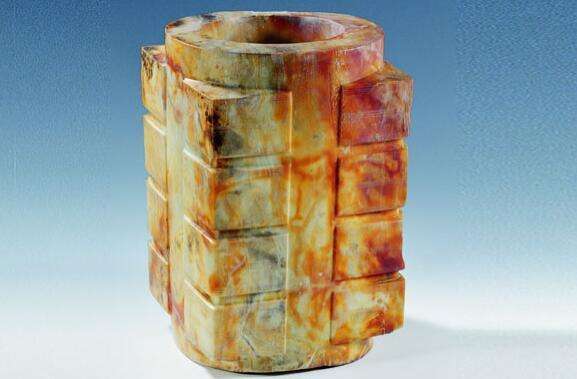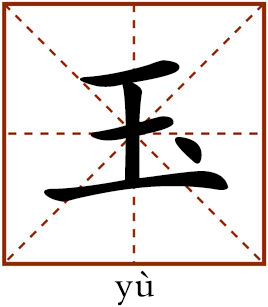Jade: a unique window into Chinese minds

The jade cong unearthed in Jinsha site demonstrates the cosmic idea of the sky as an orb and the earth as a rectangle in ancient China.

Yu (jade) is seen in Chinese culture as the embodiment of virtue. Sharing the same component “王”, a variation of “玉”, scores of Chinese characters about jade including 瑜(yu), 琼(qiong) and璋(zhang) were frequently chosen by Chinese people as their name.
In Chinese culture, jade has long been a symbol of divinity and goodness. Although each piece of jade ware shows the characteristics of the age when it was carved, jade has been closely associated with the main thread of development of Chinese civilization, providing an important means to study the evolution of ancient China.
Commemorating the 10th anniversary of the establishment of the Jinsha Site Museum in Chengdu, Sichuan Province, which showcases the ancient Shu civilization in the Sichuan area during the Shang and Zhou dynasties, the Exhibition of Jade Culture during Xia-Shang periods was recently held in the museum.
More than 250 sets of jade ware from 12 archaeological sites were shown at the exhibition. The Sanxingdui and Jinsha sites, which are representative cultural sites of the ancient Shu civilization, have unearthed many jade items from the Xia-Shang periods.
Jade cong (which refers to long hollow pieces of jade with rectangular sides), which originated from Liangzhu Culture in the lower reaches of Yangtze River, and jade zhang (tablets), jade ge (dagger-axes) and jade yue (battle-axes) originating from the Yellow River Basin, were discovered in the Sichuan area. The ancient Shu people also absorbed the jade culture of other regions, developing new types of jade ware with distinctive Shu characteristics.
The Classic of Mountains and Seas, the earliest Chinese geographical work, which appeared as late as the Warring State Period (475-221 BCE) recorded jade culture. The book says “The Dan River originates from the Mi Mountain and flows into the Ji Swamp. The river produces a lot of white jade. Jade cream gushes from the river water and the Yellow Emperor consumed the jade cream as food. He also gathered the quintessence of jade and buried it on the southern side of Zhong Mountain. Two kinds of beautiful jade, known as jin and yu, was produced this way. Heaven, the Earth, ghosts and the gods ate it as food. Wearing ornaments made of beautiful jade, a virtuous person can ward against ominousness.”
The Yellow Emperor was believed to be the ancestor of all Chinese. He, as well as supernatural beings, Heaven, Earth, ghosts and the gods all used jade as food, which laid the foundation for jade’s cultural significance in China.
“Jade in the prehistoric age was offered as sacrifices to Heaven and the Earth, serving as a tool to communicate with the gods,” said Wang Fang, deputy curator of the Jiasha Site Museum. “Jade was believed to be the quintessence of all these things. Ancient Chinese prayed for protection by offering jade as a sacrifice,” Wang said. The jade cong in this period, which have an outwardly rectangular and internally round shape, were in accordance with the Chinese cosmic idea of the sky as an orb and the earth as a rectangle, Wang said.
Connecting jade to human virtue began in the Zhou Dynasty. Confucius once said that “Ancient virtuous people found the likeness of all excellent qualities in jade. Soft, smooth and glossy, it appeared to them like benevolence; fine, compact and strong, like intelligence; angular but not sharp and cutting, like righteousness; hanging down (in beads) as if it would fall to the ground, like (the humility) of propriety; when struck, yielding a note, clear and prolonged, yet terminating abruptly, like music; its flaws not concealing its beauty, nor an internal radiance issuing from it on every side, like good faith; bright as a brilliant rainbow, like Heaven; exquisite and mysterious, appearing in the hills and streams, like the Earth; standing out conspicuously in the symbols of rank, like virtue.”
